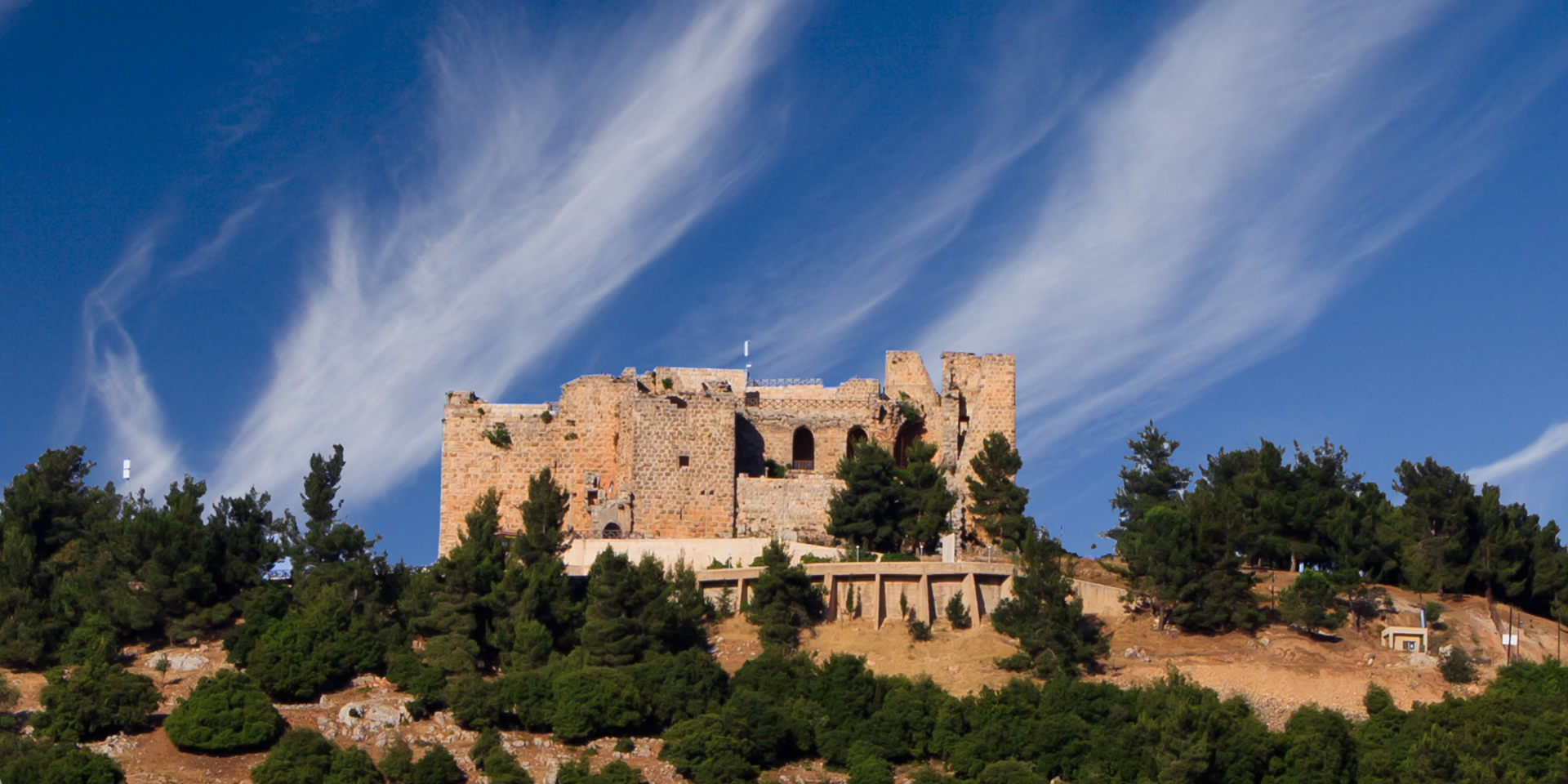Ajlun Castle is located on the site of an old monastery. It was renovated as a fort in 1184 by Izz al-Din Usama, a general in the army of Saladin. The castle controlled traffic along the road connecting Damascus and Egypt. According to Saladin's historian Baha ad-Din ibn Shaddad, the fortress was primarily built in order to help the authorities in Damascus control the Bedouin tribes of the Jabal 'Auf. These enjoyed enough autonomy as to ally themselves to the Crusaders, and had at one point set up a 100-tent camp next to the Hospitaller castle of Belvoir on the opposite side of the Jordan Valley. As such, Ajlun Castle is one of the very few Muslim fortresses built by the Ayyubids to protect their realm against Crusader incursions, which could come from Beisan or Belvoir in the west and from Karak in the south.
After Usama's death, the castle was enlarged in AD 1214–15 by Aibak ibn Abdullah, the Mamluk governor. He added a new tower in the southeast corner and built the gate.
The castle lost its military importance after the fall of Karak in AD 1187 to the Ayyubids. In the middle of the 13th century AD, the castle was conceded to Yousef ibn Ayoub, King of Aleppo and Damascus, who restored the northeastern tower and used the castle as an administrative center.
During the first quarter of the 17th century, Prince Fakhr ad-Din al-Ma'ni II used it during his fight against Ahmad ibn Tarbay. He supplied the castle with a contingent and provided provisions and ammunition. In 1812, the Swiss traveller Johann Ludwig Burckhardt found the castle inhabited by around forty people.
Two major destructive earthquakes struck the castle in 1837 and 1927.







